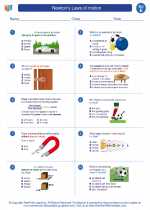Terrestrial Ecosystems
Terrestrial ecosystems are land-based ecosystems that are characterized by the presence of plants and animals adapted to life on land. These ecosystems include forests, grasslands, deserts, and tundra. The key components of terrestrial ecosystems are the abiotic (non-living) factors such as soil, water, and climate, and the biotic (living) factors such as plants, animals, and microorganisms.
Key Characteristics of Terrestrial Ecosystems
- Soil: Terrestrial ecosystems have a layer of soil that supports plant growth and provides habitat for many organisms. The composition and properties of the soil vary depending on the type of ecosystem.
- Plants: Terrestrial ecosystems are home to a wide variety of plant species, ranging from towering trees in forests to low-lying shrubs in grasslands. Plants play a crucial role in capturing energy from the sun through photosynthesis and providing food and shelter for other organisms.
- Animals: Terrestrial ecosystems support diverse animal life, including mammals, birds, reptiles, insects, and more. These animals have evolved specialized adaptations to thrive in specific terrestrial habitats.
- Climate: The climate of terrestrial ecosystems influences the types of plants and animals that can survive in a particular region. Factors such as temperature, precipitation, and seasonal changes affect the overall biodiversity of the ecosystem.
Importance of Terrestrial Ecosystems
Terrestrial ecosystems provide a wide range of benefits that are essential for both the environment and human society:
- Biodiversity: Terrestrial ecosystems harbor a vast array of plant and animal species, contributing to global biodiversity and the stability of ecosystems.
- Resource Provision: Many of the resources essential for human survival, such as food, medicine, and timber, are obtained from terrestrial ecosystems.
- Carbon Sequestration: Plants in terrestrial ecosystems play a vital role in sequestering carbon dioxide from the atmosphere, helping to mitigate climate change.
- Recreation and Aesthetics: Terrestrial ecosystems provide opportunities for recreational activities such as hiking, camping, and wildlife observation, as well as contributing to the scenic beauty of natural landscapes.
Conservation of Terrestrial Ecosystems
Due to human activities such as deforestation, urbanization, and pollution, terrestrial ecosystems are facing significant threats. Conservation efforts are crucial to protect these valuable ecosystems and the life they support. Strategies for conservation include establishing protected areas, promoting sustainable land use practices, and raising awareness about the importance of preserving terrestrial biodiversity.
Study Guide
To study the topic of terrestrial ecosystems, consider the following key points:
- Identify and describe the major types of terrestrial ecosystems, including forests, grasslands, deserts, and tundra.
- Explain the interactions between abiotic and biotic factors within terrestrial ecosystems, and how these interactions contribute to the overall functioning of the ecosystem.
- Discuss the importance of terrestrial ecosystems for environmental stability, resource provision, and human well-being.
- Explore the impact of human activities on terrestrial ecosystems and the measures that can be taken to conserve and protect these valuable habitats.
By understanding the intricacies of terrestrial ecosystems and the factors that influence their health and sustainability, we can work towards ensuring the long-term viability of these vital ecosystems.
[Terrestrial] Related Worksheets and Study Guides:
.◂Science Worksheets and Study Guides Fifth Grade. Newton's Laws of motion

 Activity Lesson
Activity Lesson
 Worksheet/Answer key
Worksheet/Answer key
 Worksheet/Answer key
Worksheet/Answer key
 Worksheet/Answer key
Worksheet/Answer key
 Worksheet/Answer key
Worksheet/Answer key
 Vocabulary/Answer key
Vocabulary/Answer key
 Vocabulary/Answer key
Vocabulary/Answer key
